Let’s talk about Jersey.

No, not that Jersey.
This Jersey.

The island of Jersey—better known locally and colloquially—as the Bailiwick of Jersey is one of the larger islands located in the English Channel. In fact, all such islands are considered “Channel Islands”, collectively. And, like the Bailiwick of Guersney, Jersey is considered a dependency of the British Crown.

While it has self-governing status, and yields to the Crown, it’s not considered part of the United Kingdom, the British Commonwealth, or the European Union. It occupies this sort of weird limbo status, much like some U.S. protectorates, only . . . not as hated by the parent “colonial”.
One thing that struck me as fascinating is that I should have known about this island. It was occupied by the Duchy of Normandy for over five hundred years! My ancestors hail from Normandy. We were the Vikings that were too lazy to continue onward to the British isles until we were kicked out of Igé. It wasn’t until I learned that Jersey now produced tea that my attention veered to it.
Sometime in 2015, members of the Jersey Royal [Potato] Company were thinking of using plots of land for a new, sustainable crop source. One of them happened upon a British TV program about Scottish tea growers, and thought, “Hey, that’s a jolly good idea!” (Okay, they probably didn’t say that, exactly, but that’s how it sounded in my head.)
Over the course of the next couple of years, since none of the potato folks new anything about tea planting, they consulted those who do. Chief among them, an old acquaintance of mine—Nigel Melican of TeaCraft. He, in turn, brought in a talented young planter whom he met on a tour of India, a woman named Alicia Gentili . . . who seemed oddly familiar to me.
In 2017, they broke ground. For sourcing, they turned to hardier Nepalese and Georgian seed, mainly because of Jersey’s far colder climate. For land, they chose three plots that were micro-acclimatized to handling tea plants. Six acres in total. The garden plots even had names, which were . . . kind of adorable.
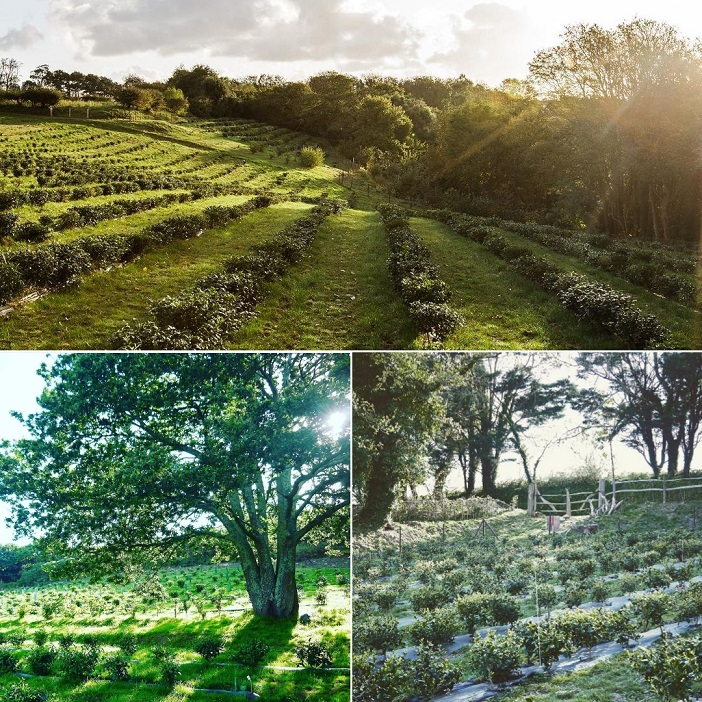
Mrs. Pipon, Simpson, and Gorey Hill Gardens, respectively.
By 2020, they apparently had enough of a yield to begin production, which I found quite surprising. I usually thought it took up to five years before tea plants were ready for plucking. Perhaps Georgian and Nepalese plants presented a higher yield than expected. I’m not an expert on the subject of tea mono-agriculture, but their consultants are.
In September of 2020, I was contacted by their marketing and in-house tea consultant—Eunice Pallot. She remembered me from a past encounter at a World Tea Expo in 2015. She mentioned that their new Jersey tea outfit was set to go live—Jersey Fine Tea—and was curious if I wanted to try some. Not sure why I was on the shortlist of people to consider tasting their new wares, but who was I to question the open palms of a new tea territory?! I gave an enthusiastic affirmative.
A quick aside: while researching the Jersey Fine Tea outfit, it finally occurred to me where I recognized their tea producer, Alicia. I probably met her in passing at a tea festival or two in the Portland area, since she hailed from there. Not only that, but she also worked as a tea producer for Minto Island Tea; so, I might have tried tea she made as well. Huh . . . small world.
By November of last year, the site went live, and the products were listed. They started off with a white tea, a black tea, and a green tea. The white tea disappeared within weeks. Probably because they produced a smaller amount of it. While white tea may seem like an easy tea to make, the timing is brutal. Green and black tea; the magic is all in the process. And those were the two I got to try.
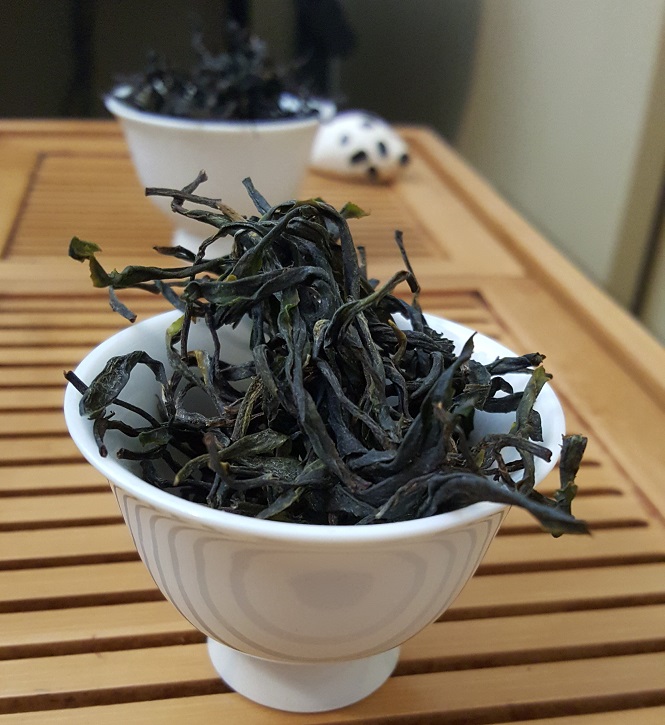
For brewing, I adhered to what was on the bags. For the green tea, I went with 2.5 grams of leaf in a 6oz. gaiwan, brewed in 180F water for three minutes. For the black: same measurements, but with water just shy of a boil – three minutes.
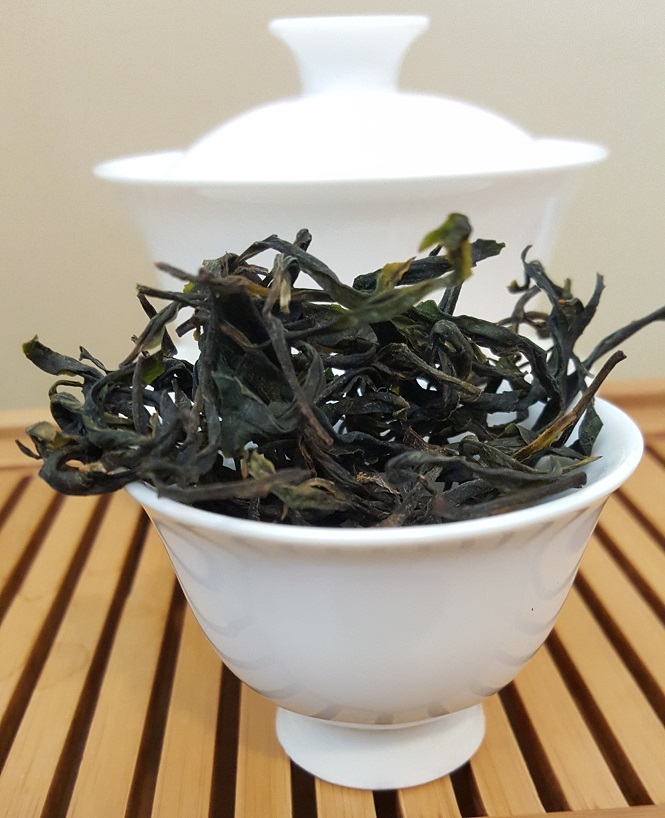
First impression? This was quite unique in all respects. It was very difficult to find something to compare it, too. The closest approximation I could make was a small garden pan-fried green from Assam. (Not a slight; that stuff was excellent!) The leaves were large, twisty, dark green in appearance, and gave off an aroma of sweet green beans, roasted dates, and honey-lathered chestnuts. Basically, the world’s most decadent trail mix aroma.
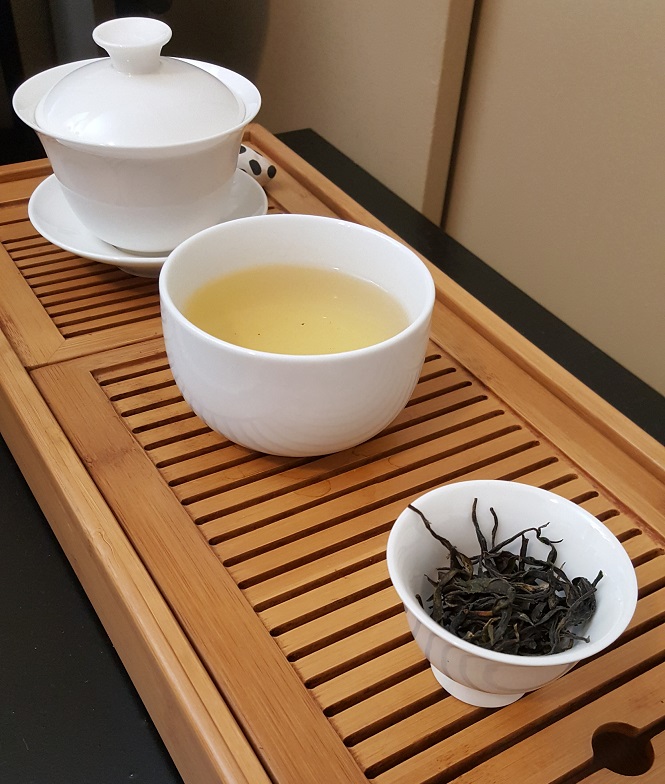
The liquor brewed to a surprisingly bold green, considering the size of leaf. Usually, long leaf greens brewed fairly light. Younger or cut leaf greens took on that bold, radioactive green palette. Well, this sorta did that. And I swear I didn’t over-brew. As for taste . . . I mean . . . just wow. The forefront was straight smooth honey sweetness that translated to a leafy/floral middle, but went back to that smooth sweetness.
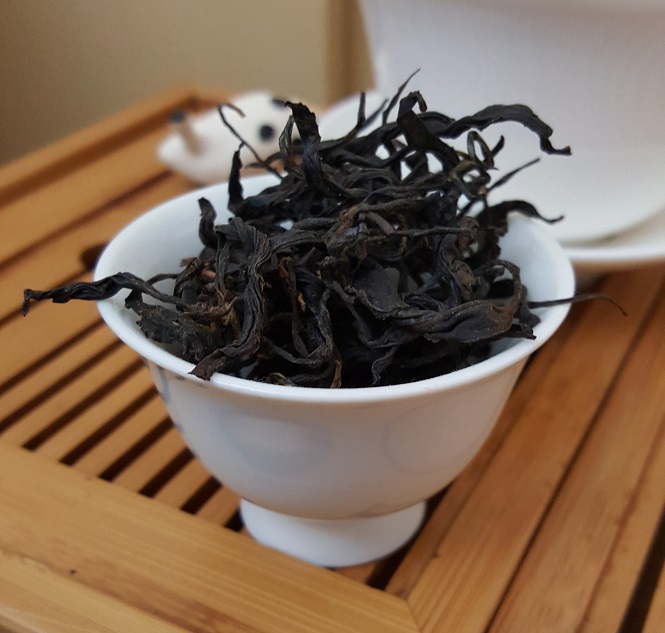
The black tea looked like the green tea in shape. The leaves were long, twisty, yadda-yadda, but – y’know – darker . . . obviously. What this reminded me of, though, was a surprise. From aromatics to appearance, this screamed, “Shan Cha!” That black tea made from Taiwan’s indigenous tea-adjacent species. The smell was all clay, wintermint, and menthol, but with a slight shade of malt.

The liquor brewed up rather light, which was more in line with expectations for a long-leaf black. The palette was a lighter shade of copper with a “menthol cigar wrapping” aroma. (I know that’s not a thing, but my mind goes to weird places when trying to make associations. Deal. ) The flavor echoed the aromatic presentation. This tasted like a Taiwanese black tea. Veeerrry close to echoing the wild-eyed notes of Shan Cha, specifically. Earthenware pottery, mint, malt, and aromatic resinous wood all came to mind as well.
And the question [all four of] you readers are probably asking now is, “Which one was your favorite?”
Y’see? As has been a pattern lately, that’s tough to answer. Both teas were exceptional, especially from such a new start-up. Whole leaf material, no cutting, delicate processing, small gardens? These are a few of my favorite things! (Yeah, I sang it when I typed it.)
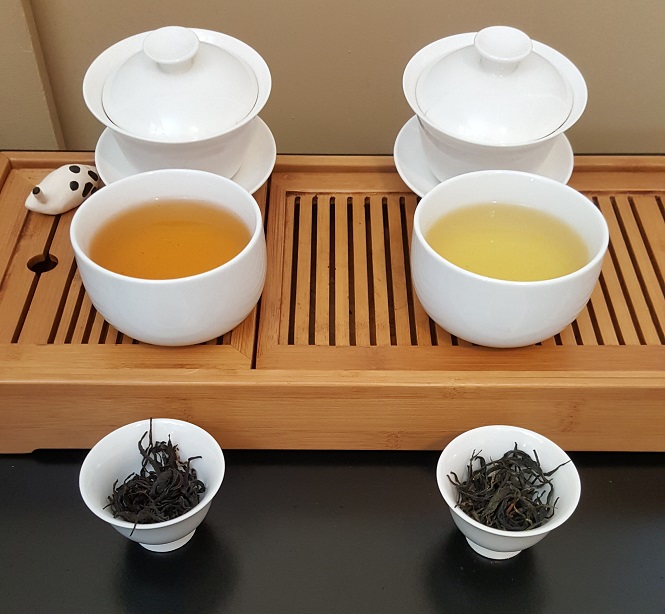
Gotta go with the green on this one. Granted, I have been on a bit of a green tea kick, lately. But that’s not all there is to it. Several months after this green tea was produced, I revisited the last vestiges I had left in the sample bag.
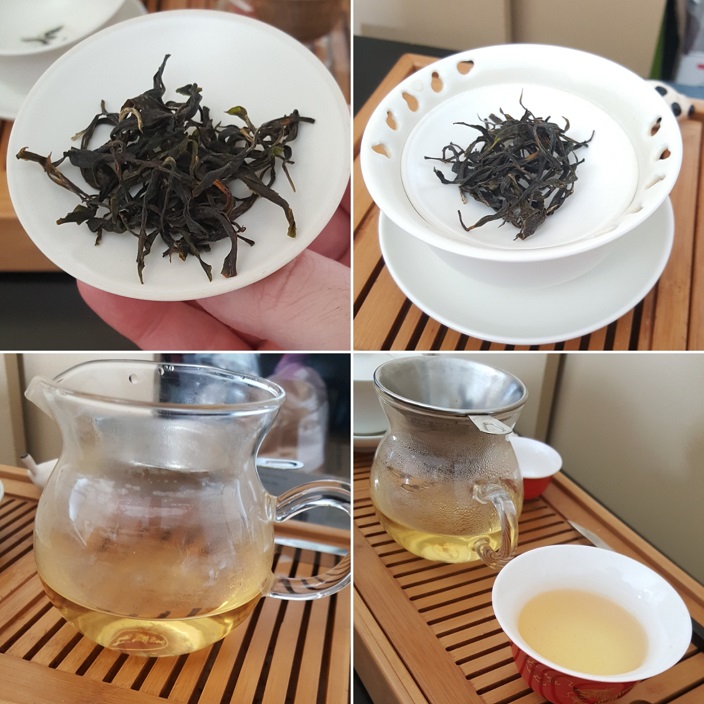
And it still held up; tasted just as fresh as the day it was plucked. Not many green teas have that kind of staying power, months later. Usually, they lose that date sugar sheen by month three. As I see it, that’s their strongest tea, but only by a leaf stem.

Can’t wait to see what 2021 brings.
But I hope it’s brought to me.
To buy the Premium Green, go HERE.
To buy the Premium Black, go HERE.
Leave a Reply